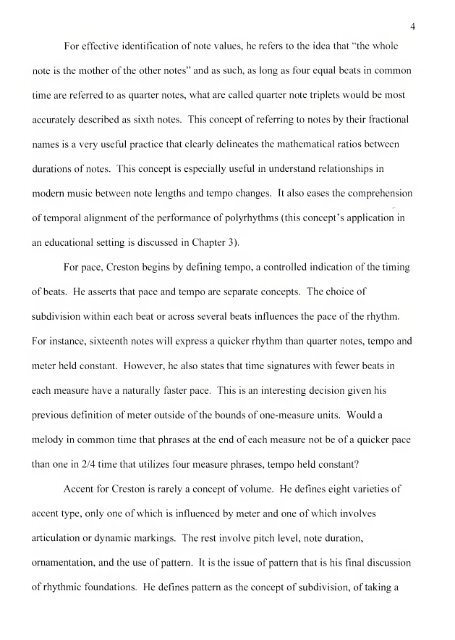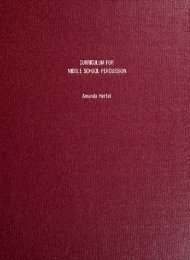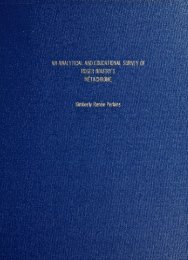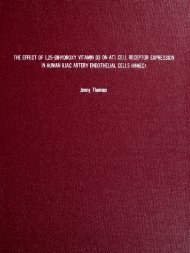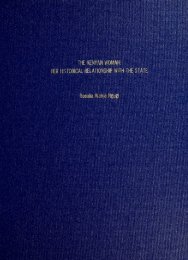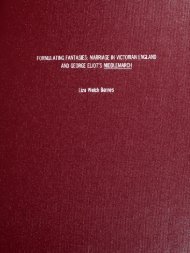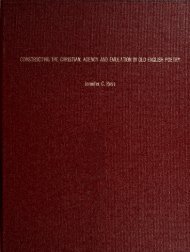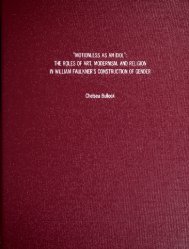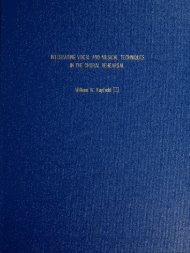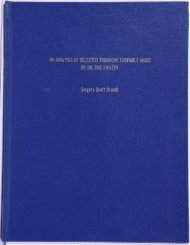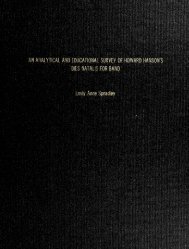The Study and Application of Rhythmic Analysis for Wind Band ...
The Study and Application of Rhythmic Analysis for Wind Band ...
The Study and Application of Rhythmic Analysis for Wind Band ...
You also want an ePaper? Increase the reach of your titles
YUMPU automatically turns print PDFs into web optimized ePapers that Google loves.
4For effective identification <strong>of</strong> note values, he refers to the idea that "the wholenote is the mother <strong>of</strong> the other notes" <strong>and</strong> as such, as long as four equal beats in commontime are referred to as quarter notes, what are called quarter note triplets would be mostaccurately described as sixth notes.This concept <strong>of</strong> referring to notes by their fractionalnames is a very useful practice that clearly delineates the mathematical ratios betweendurations <strong>of</strong> notes. This concept is especially useful in underst<strong>and</strong> relationships inmodern music between note lengths <strong>and</strong> tempo changes.It also eases the comprehension<strong>of</strong> temporal alignment <strong>of</strong> the per<strong>for</strong>mance <strong>of</strong> polyrhythms (this concept's application inan educational setting is discussed in Chapter 3).For pace, Creston begins by defining tempo, a controlled indication <strong>of</strong> the timing<strong>of</strong> beats. He asserts that pace <strong>and</strong> tempo are separate concepts. <strong>The</strong> choice <strong>of</strong>subdivision within each beat or across several beats influences the pace <strong>of</strong> the rhythm.For instance, sixteenth notes will express a quicker rhythm than quarter notes, tempo <strong>and</strong>meter held constant.However, he also states that time signatures with fewer beats ineach measure have a naturally faster pace.This is an interesting decision given hisprevious definition <strong>of</strong> meter outside <strong>of</strong> the bounds <strong>of</strong> one-measure units.Would amelody in common time that phrases at the end <strong>of</strong> each measure not be <strong>of</strong> a quicker pacethan one in 2/4 time that utilizes four measure phrases, tempo held constant?Accent <strong>for</strong> Creston is rarely a concept <strong>of</strong> volume.He defines eight varieties <strong>of</strong>accent type, only one <strong>of</strong> which is influenced by meter <strong>and</strong> one <strong>of</strong> which involvesarticulation or dynamic markings.<strong>The</strong> rest involve pitch level, note duration,ornamentation, <strong>and</strong> the use <strong>of</strong> pattern. It is the issue <strong>of</strong> pattern that is his final discussion<strong>of</strong> rhythmic foundations. He defines pattern as the concept <strong>of</strong> subdivision, <strong>of</strong> taking a


